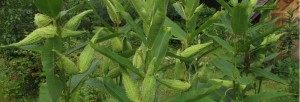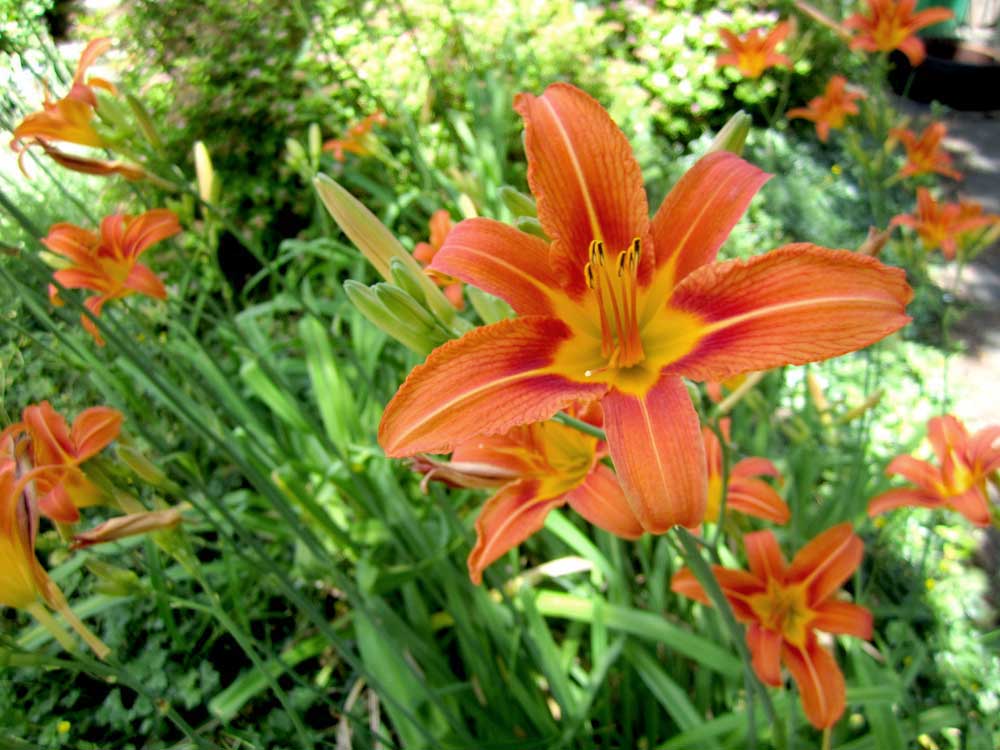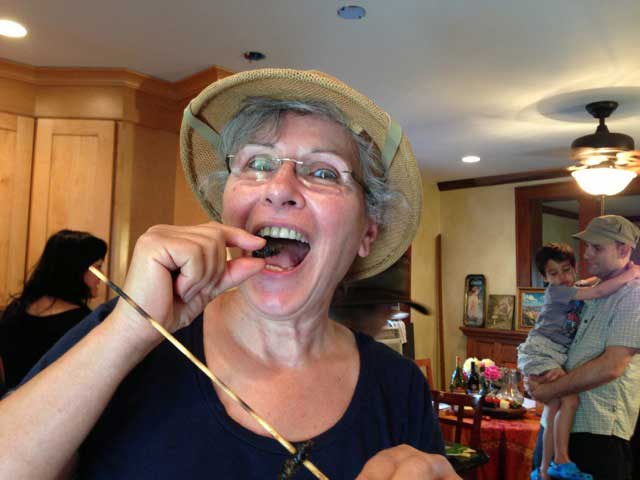Blog: Milkweed: This week’s seasonal edible plant

Milkweed is one of the most useful plants that we have been blessed with. Beginning in May, the shoots appear, heralding the spring. If I encounter a large enough patch, I’ll carefully harvest a few by slicing off the tender tops. I’m careful to only select from those that are about 10 inches or less, as the taller plants begin to get tougher and as they develop a red blush, they become somewhat toxic. The harvested shoots are usual about 6 to 8 inches in length, and have 2 or three pairs of leaves, with a cluster at the top. I remove all but the very top leaves and put them aside to be used in other dishes. What remains resembles asparagus.
These tasty shoots are delicious to eat as is or they can be lightly boiled or steamed and serves with butter or your favorite sauce. I prefer them to asparagus. One of our recommended recipes for May I call Milkweed Seaweed noodles, in which I shave thin slivers from the stems until I have a bowl of green “noodles”. I then either steam or blanch them until slightly softened. I generally make up an Asian style dressing, using soy sauce or tamari, rice vinegar, fish sauce, sesame oil and palm sugar, which I pour over the noodles. Finally, I sprinkle over some toasted sesame seeds and serve. Try it. It will become a perennial favorite with your family.
In June the flowers begin to appear. Before they open they resemble clusters of capers. If there are enough clusters at this stage, I like to pick a few to use in a variety of dishes from salads to soups to stir fries. As the flowers open up they become more colorful and really help to brighten up a salad or just about any dish. They are a perfect snack when you are walking through a meadow and happen upon a patch of milkweed. However, be careful not to pop a bug in your mouth, as milkweed flowers are very popular with insects, particularly the Monarch butterfly and a little orange and black beetle known as the milkweed bug. It is quite harmless, and if you are feeling adventurous, quite delicious.
After the flowers fade and drop away, start to look out for the seed pods. There are generally about 2 or 3 to a plant, particularly in sunny areas. When they reach about 1 1/2 to 2 inches in length they are ready to be harvested, however, only pick them if there are plenty to be had and always make sure to leave a few to propagate for next year. The pods only remain edible for a few days before they begin to get tough and stringy. You can tell if they are too ripe without having to pick them. The edible pods are very firm. As they become spongy feeling, you’ll know that it is too late.
The pods can be used in many different ways. They are quite tasty raw, or sliced up and added to salads. They can be sautéed, battered and deep fried or prepared like you would okra (without being slimy). Another idea you can try is to split them along the seam and remove the insides (immature seeds and silk, then stuff them with grain and chopped vegetables, cover them with cheese and breadcrumbs and bake them in the oven or steam them and drizzle your favorite sauce over them. There are so many ways that you can prepare them that the only limit is your imagination.
In the Fall, after the plant has begun to die off, it still has its uses. The stalks can be stripped of their outer layers, which can be used to make twine. I have made some very strong thread from milkweed, that I used to sew on a button that is still firmly attached several years later.
As if this wasn’t enough, the latex from the plant can be used to remove warts (I’ve done it – it really works).
To watch a video on cooking milkweed click here
For a recipe for cooking milkweed click here





You must be logged in to post a comment Login